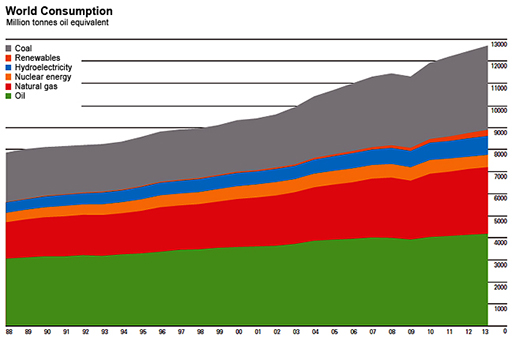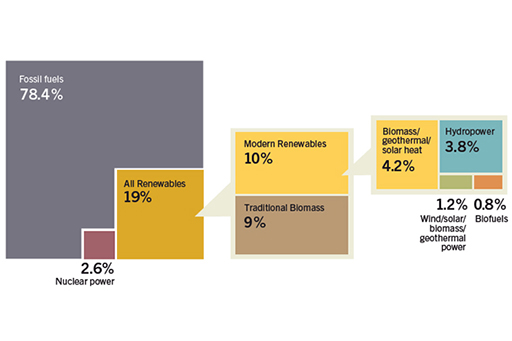4.1 World energy supplies
World total annual consumption of all forms of primary energy increased more than tenfold during the twentieth century. As Figure 3 shows, by the year 2016 it had reached an estimated 550 Exajoules, equivalent to the energy content of some 13.2 billion tonnes of oil.

Fossil fuels provided some four-fifths of the total. The world population in 2016 is some 7.5 billion, so the annual average energy consumption per person was about 74 GJ, equivalent to the energy content of approximately 5.3 litres of oil every day for every man, woman and child.
Activity 3
Do you think that there are differences in annual consumption rates depending on location in the world?
Answer
The average North American consumes some 250 GJ per year; whereas most Europeans use roughly half this amount; and many of those in the poorer countries of the world less than one fifth – much of it in the form of traditional ‘biofuels’
How much do renewables contribute to world energy supplies? As Figure 4 shows, traditional biomass, hydro power and a range of other renewable sources contributed an estimated 19% of the world’s final energy consumption in 2015.

The 19% share of renewables shown in Figure 5 differs from the smaller share that can be estimated from Figure 3 (adding hydro and renewables), which shows a share of around 10%. This is because primary energy includes a great deal of energy wastage (mainly waste heat). Also the BP data used in Figure 3 do not include energy from ‘traditional’ biomass, as this is not normally traded.
